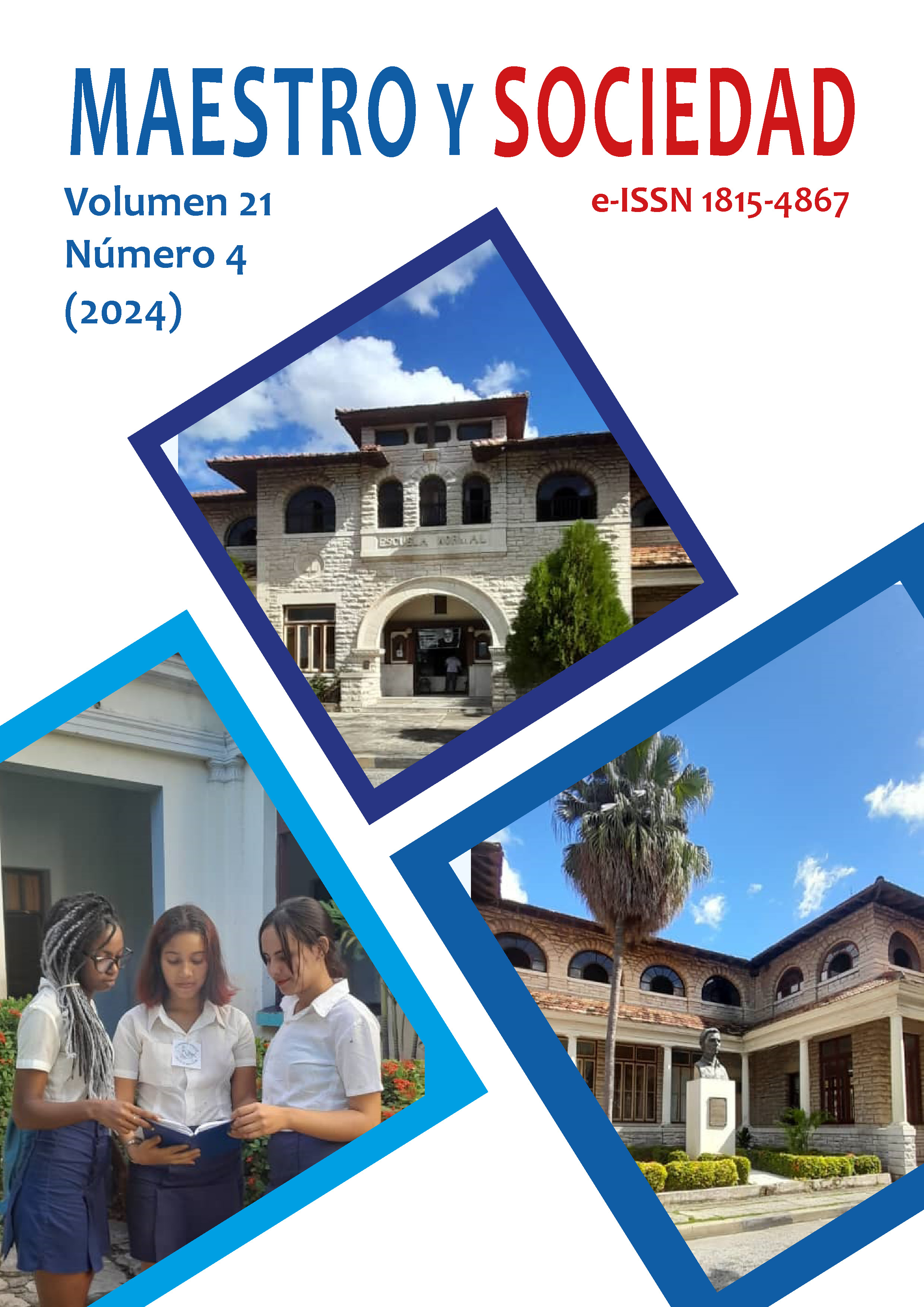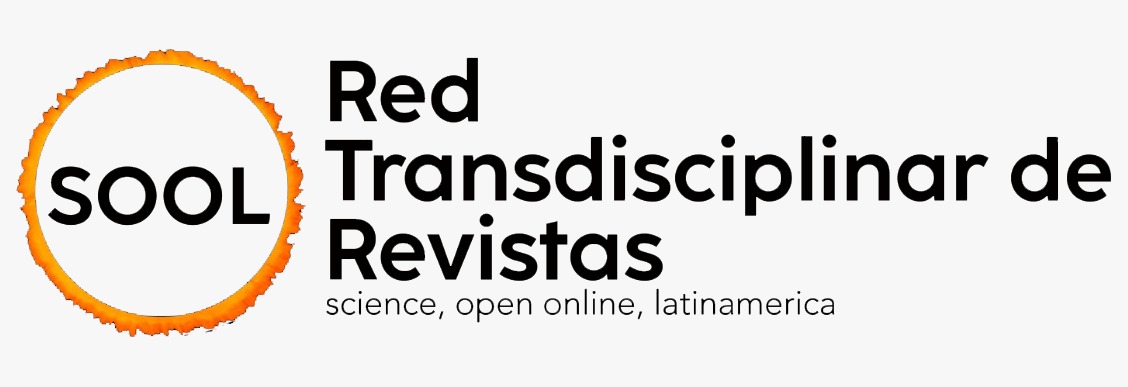Challenges in Using Artificial Intelligence to Enhance Oral Production in English Language Teaching
Palabras clave:
artificial intelligence, teaching English, oral production of EnglishResumen
Introduction: Technology transforms the classroom on a daily basis into interactive spaces based on the constant flow of information and communication it offers. The virtual classroom and artificial intelligence (AI) are indicators of interactivity, flexibility, and diversity. They open up a wide spectrum of possibilities to improve the process of learning and mastering new languages. This research focuses on the use of AI in learning English as a second language. Materials and methods: A qualitative approach is used, based on exploratory and interpretive documentary analysis of research published in databases such as Scielo and Latindex. The research sample is made up of secondary sources corresponding to the works reviewed on the topic of interest of this work. Given the novelty of AI, the time period of validity or updating of research in the last 7 years (2019-2025) was reduced. For the documentary analysis, content analysis was used, a strategy in accordance with the type of design of this article. Results: The most relevant results related to AI and the teaching-learning of English or a second language show that there is no specialization of works on the subject. These are experiences of designing proposals and isolated applications of AI such as virtual reality and other benefits of its use. Discussion: AI and big data are contributing to education and training projects, while providing resources and data-based decision-making. Conclusions: The impact of AI, which is increasing over the years, justifies the demand for scientific and educational research to obtain benefits in the teaching-learning of English or a second language and to reduce the counterproductive or collateral effects of these.
Citas
Álvarez Vega M. et al. (2020). Inteligencia artificial y aprendizaje automático en medicina. Revista médica Sinergia, 5 (8), e557. https: //doi.org/10.31434/rms.v5i8.557
Chicaiza, R. et al. (2023). Aplicaciones de Chat GPT como inteligencia artificial para el aprendizaje de idioma inglés: avances, desafíos y perspectivas futuras. Revista Latinoamericana de Ciencias Sociales y Humanidades. Redilat. DOI: https://doi.org/latam.v4i2.781
Gallardo, C. P., Rodríguez, A., Caurcel, M. J., y Capperuci, D. (2020). Adaptación y validación de un instrumento de evaluación sobre la utilización de herramientas digitales en las aulas de Educación Especial. Studi sulla Formazione, 23 (2), 161-173. http://10.13128/ssf-12058
Gallardo, C. P., Rodríguez, A., Caurcel, M. J., y Capperuci, D. (2021). Apps for people with autism: Assesment, clasification and ranking of the best. Technology in Society, 64 (101474), 1-10. http://doi.org/10.1016/j.techsoc.2020.101474
García Villarroel, J. (2022). Implicancia de la Inteligencia Artificial en las Aulas Virtuales para la educación superior. Revista Orbis Tertius UPAL Año 5. N0 10, Diciembre 2021-Mayo 2022. ISSN versión digital: 2709-8001.
Hernández, R., Rodríguez-Fuentes, A. y Roselli, N. (2019). Integración de las TIC a la educación: Una mirada desde el aula universitaria. Hamut ay, 6 (3), 9-11. http://dx.doi.org/10.21503/hamu.v6i3.1839
Martínez Uribe, C. H. (2008). La educación a distancia: sus características y necesidad en la educación actual. Fundación Dialnet. Universidad de la Rioja.
Vázquex-Cano, E. Medios, recursos didácticos y tecnología educativa, 1 ed, 1-144, UNED, ISBN: 9788483227800, Madrid, España.
Zuppardo, L., Rodríguez, A. y Serrano, F. (2017). Modelo piloto de estudio de tratamiento rehabilitador de autoestima y comportamiento en adolescentes con dislexia y disortografía mediante su mejora lectoescritora. Propósitos y Representaciones, 5 (2), 359-400. http://dx.doi.org/10.20511/pyr2017.v5n2.174
Zuppardo, L., Rodríguez, A. y Serrano, F. (2019). Sotfware Lectoescritores contra la dislexia y la disortografía. EduTiclnnova, 7, 27-39. https://www.aulavirtualusmp.pe/ojs/index.php/eduticinnova/article/view/1845
Descargas
Publicado
Cómo citar
Número
Sección
Licencia
Derechos de autor 2024 Silvia Licett Ramos Idrovo, Nancy de las Mercedes Barreno Silva, Leonardo Mauricio Martínez Paredes, Erich Gonzalo Guamán Condoy

Esta obra está bajo una licencia internacional Creative Commons Atribución-NoComercial-SinDerivadas 4.0.
Esta revista proporciona un acceso abierto inmediato a su contenido, basado en el principio de que ofrecer al público un acceso libre a las investigaciones ayuda a un mayor intercambio global de conocimiento. Cada autor es responsable del contenido de cada uno de sus artículos. Los artículos pueden ser inéditos o estar disponibles previamente en servidores de preprints reconocidos por la revista. Sin embargo, no se permite la duplicación de la publicación o traducción de un artículo ya publicado en otra revista o como capítulo de un libro.
This journal provides immediate open access to its content, based on the principle that providing the public with free access to research supports a greater global exchange of knowledge. Each author is responsible for the content of each of their articles. Articles may be previously unpublished or available on preprint servers recognized by the journal. However, duplication of publication or translation of an article already published in another journal or as a book chapter is not permitted.
Esta revista oferece acesso aberto imediato ao seu conteúdo, com base no princípio de que oferecer ao público acesso gratuito à pesquisa contribui para um maior intercâmbio global de conhecimento. Cada autor é responsável pelo conteúdo de cada um de seus artigos. Os artigos poderão ser inéditos ou estar previamente disponíveis em servidores de preprints reconhecidos pela revista. No entanto, não é permitida a duplicação de publicação ou tradução de artigo já publicado em outro periódico ou como capítulo de livro.



























 Universidad de Oriente
Universidad de Oriente 